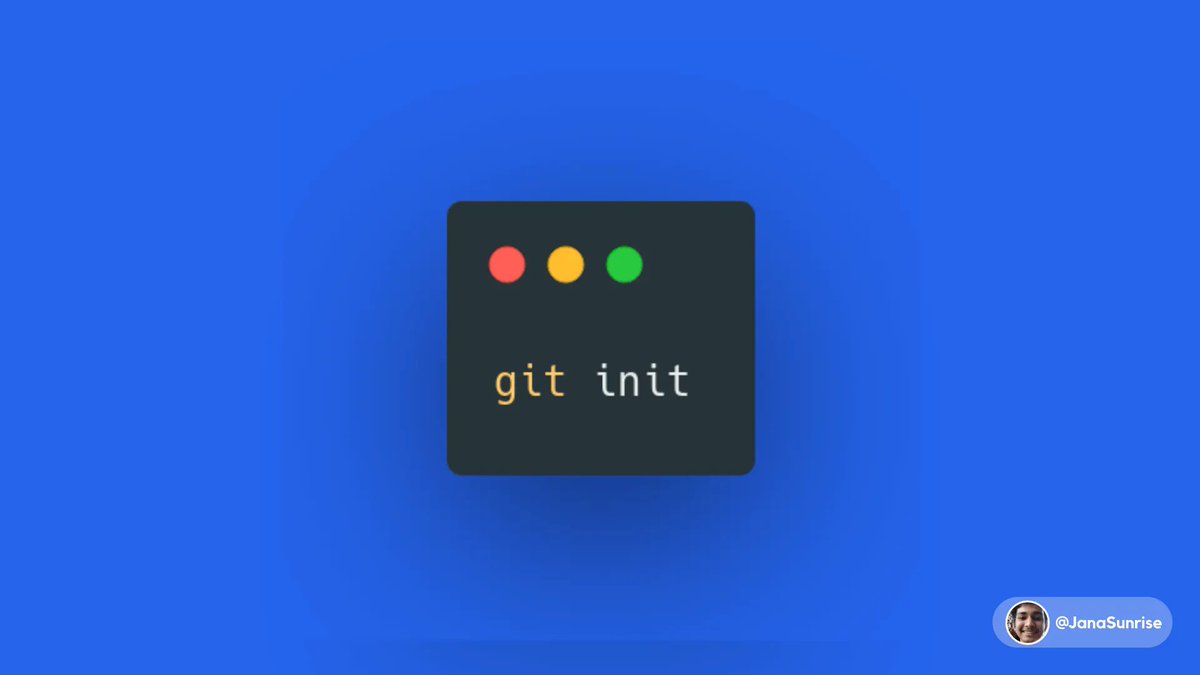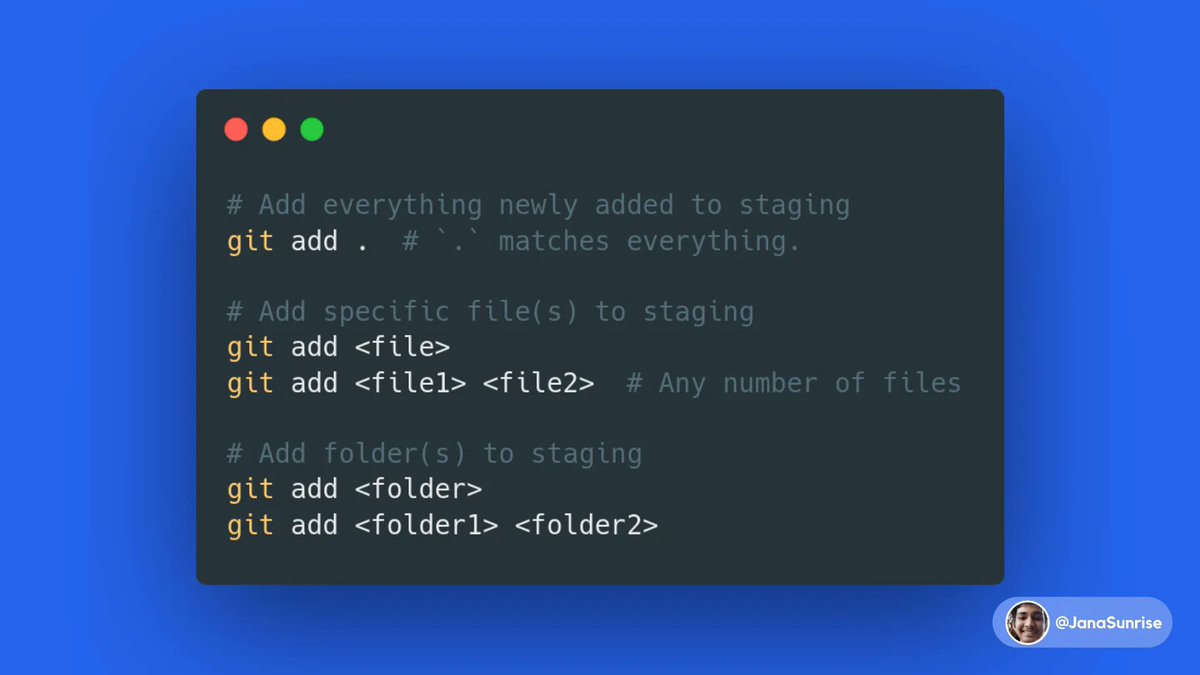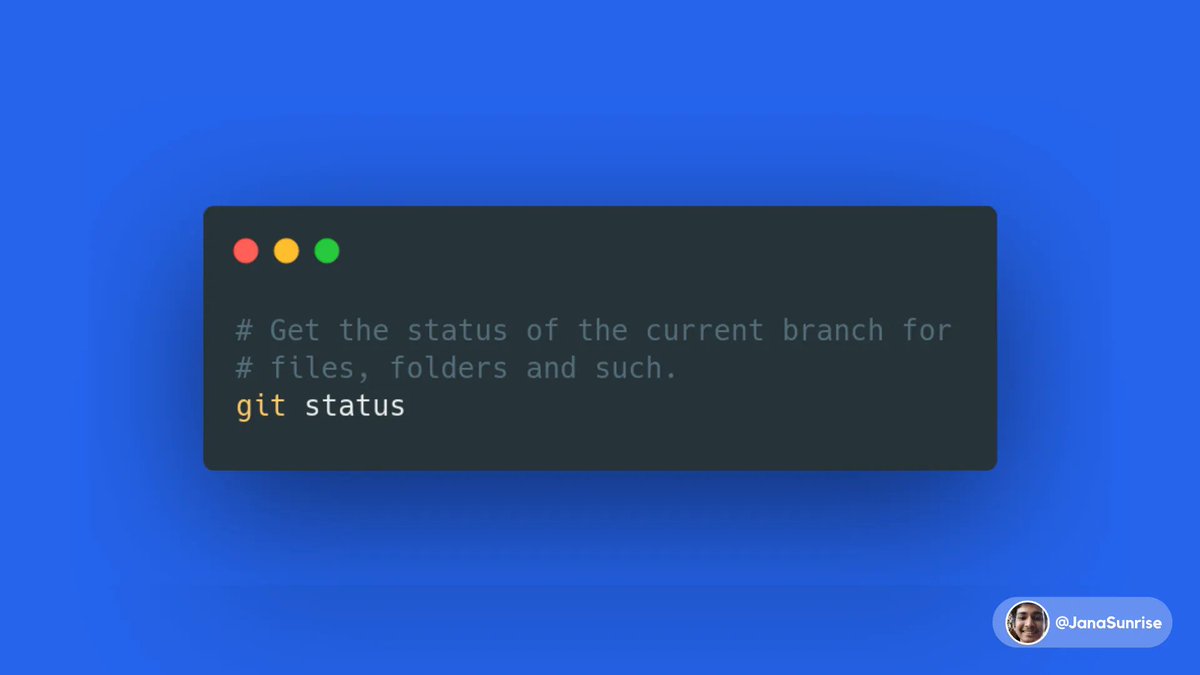This thread is continuation for my thread on Git for everyone, where I explained all about git.
If you haven't checked that out, and if you're willing to, Please do. Appreciate it, Here's the link. ↓
https://t.co/YBQDXSF9ga
1/ Initializing git in project
This is the command, you would always need. This initializes git, along with it's structure for tracking and managing files, folders and code.
You cannot use any other command, if not initialized.
2/ Adding files to staging
Now, we've initialized repo, and Created files. We have to move the files to staging, before commiting them.
Turns out, there are a lot of ways to do it.
3/ Track changes, and Get info about staging stage
Once we've added files, folders and other things to staging, We have the need to ensure everything's correct, or check if there's something wrong, or keep track.
Git allows to display all the changes, additions, and deletions.
4/ Commit files, and create a log
We're good to commit now! When we commit, It creates a commit object with all info mentioned in previous thread.
A commit message is necessary to properly describe it. The language should be imperative, Not more than 50 characters.
5/ git commit --amend
Oops! What if we missed out something in the commit message, or forgot to stage a file?
Git commit with amend flag comes to the rescue. Here is how you can use it!
6/ Getting changes for specific files after staging
This is what git is all about. Maintaining history, and list of changes. Hence, Git allows us to preview the changes in file specified based on what's changed since previous commit.
Here is how!
7/ Getting commit history!
As git makes commit objects with all metadata, We should be able to access it! And, we can too. Just wonderful. It gives all metadata, we need, along with the Hash to revert/reset and whatever operation we have to perform.
Here is the command!
8/ Cloning a repository
We always need the project to be present locally when we want to work. Git provides an extremely *easy* way to do that.
You need to have the URL to the remote repository along with permissions to clone.
Here's how,
9/ Pushing to a repository
Okay! We have our brand new repository. And we have created the basic project to get us started.
Now, we need to update the changes in remote, by pushing, and also enabling others to get your changes.
Here is how you can push,
10/ Pull changes from remote repo to local
Oh, so we already have the repo locally, but the changes are outdated. How do I pull the new changes and update my local branch to work further?
It's easy.
11/ Getting configured remote repository paths
Working with remote repositories needs us Remote repositories configured. Git allows us to see the configured ones, and take actions based on it.
Here's how.
12/ Configuring and modifying remote repos
We also have the need to add remote repositories, to push to them, and have a reference, or delete old reference to repositories.
These are not that frequently used, but can be a lot of use when needed.
13/ Changing branch
Working in branches on specific features, fixes or any kind of changes is really frequent, and making PRs to review and merge them.
Changing branch is highly used. Here is how you can do that!
14/ Working with branches
Well, We can change branches. But what about operations?
Such as, creating branch to work in it, deleting a branch after work's done and merged, or renaming a branch to describe it better?
All these are really simple.
15/ Revert useless commits
A lot of times, we might have commited somethings, We didn't intend, and We wish to go back to previous state (or commit).
Git allows to do that, using the `revert` subcommand.
Here's how,
16/ Clean up unstaged files
A lot of instances, we might have the need to remove or delete all the unstaged changes (or files).
Git does provide a handy little utility for that.
17/ Unstage a file
Let's say, we staged a file accidentally, and we meant to stage it in next commit. But how do we revert the staging?
Here is how!
18/ Tag a specific commit
Releases of specific softwares and tools are really common. Git provides us with tags to tag the version to a specific hash, and keep it.
Really handy and awesome. Here's how,
19/ Temporarily store tracked files
Git stash allows to store tracked files temporarily for situations, such as pulling changes into my changes which are not commited yet, or some other situations.
Can be really handy! Here's how,
20/ Display all changes in specified commit
A lot of times, we have to evaluate the changes done in a specific commit. It's made extremely easy by git using the `show` subcommand.
Here's how,
You have reached the end! 👋
Thanks for reading! If you loved this thread,
- Follow me at
@JanaSunrise 🔥
- Like and Retweet the first tweet 🥰
- And, let me know what you think! 👋
I'm Sunrit, and I make content about ML, Python, Javascript and more! 💙
Catch you next time 🤗






















































